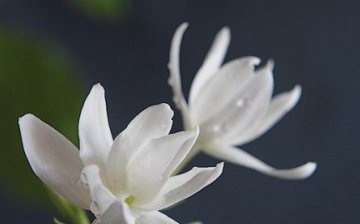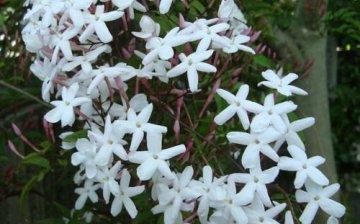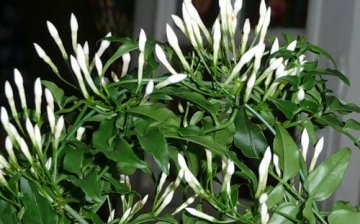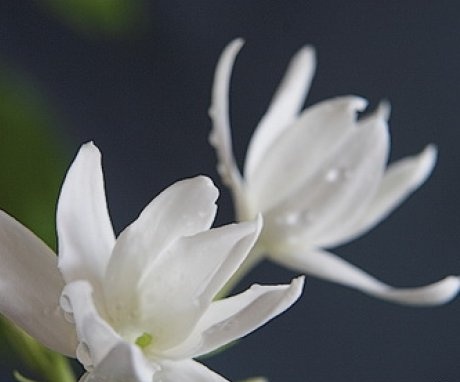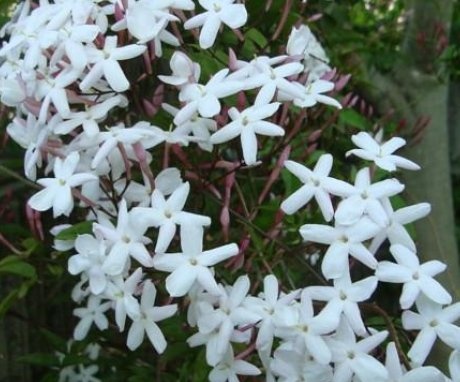Why indoor jasmine in the photo is attractive - care secrets
To make indoor jasmine look perfect, as in the photo, you need to make some effort, after completing which the florist gets a beautiful flower and an unprecedented smell.
Content:
- Types of homemade jasmine
- Homemade jasmine care
- Transplantation and reproduction of homemade jasmine
Types of homemade jasmine
Jasmine home is of different types. The most common jasmine is large-flowered. It has white tubular flowers clustered together in 20 or more flowers per inflorescence. The stems can be up to three meters long. Its flowering time is spring.
The medicinal form is also common. It is similar to a large-flowered one, blooming later, usually in mid-summer to early fall. A distinctive feature is that medicinal jasmine blooms only in adulthood.
A very bright variety of homemade jasmine - royal. He pleases the owners with flowers in winter. He has huge flowers - up to 8 cm in diameter. The disadvantages of this species include the lack of smell in the flower. All the components of jasmine bring medicinal benefits: roots, leaves, flowers.
In addition to jasmine with white flowers, jasmine with semi-double yellow flowers is grown at home. It blooms in spring or summer. The stems are delicate, therefore they need a garter to special supports. The flowers, like the royal jasmine, are odorless.
Homemade jasmine care
The main secret of the abundant flowering of jasmine is the correct carewhich is as follows:
- regular watering. It is carried out throughout the year, only slightly reduced in winter. Water for irrigation should be soft, so many growers use rainwater. If there is no rainwater, then the water must be settled. You can not water with cold water, because the plant in nature grows in warm regions and is not adapted to cold water;
- high humidity. Jasmine loves high humidity, so it is often sprayed. An exception is the flowering period. The jasmine pot is placed on a pallet with damp expanded clay and make sure that it is constantly moistened. If the air around the jasmine is dry for several days, then the leaves lose their shine and beauty;
- adequate lighting. Jasmine likes bright lighting, but at noon, the flower needs to be slightly shaded from the scorching sunlight. It is advisable to place jasmine pots on windowsills that are located to the west and east. If the flower is placed in the northern part, then over time, the leaves will begin to turn yellow and the flower will stop blooming. In summer, jasmine can be taken out into the garden or onto the balcony, but should be placed so that the sun's rays do not touch the plant at first. Only after adaptation to new conditions can the flower be exposed to the sun;
- moderate temperature. The optimum temperature for jasmine ranges from +18 to +25 degrees in spring, summer and autumn. The most acceptable temperature in winter is from +8 to +10 degrees. If the temperature is higher, then the plant will grow, and there will be much less flowers. In a private house, it is not difficult to achieve such a temperature regime, but in apartments where there is no insulated balcony, it is quite difficult - it is often necessary to ventilate the room;
- timely feeding... Jasmine needs feeding, which is carried out monthly. For these purposes, bird droppings are bred at the rate of 50 g per 1 liter of water or slurry - 100 g per 1 liter of water. Mineral fertilizers are applied 2 years after planting. The first feeding is carried out in the spring, for which 2 g of urea, 3 g of superphosphate and 2 g of potassium sulfate in 1 liter of water are diluted. After flowering, the jasmine is fed with a solution: 3 g of superphosphate and a handful of wood ash are dissolved in 1 liter of water. To simplify this procedure, you can buy ready-made dressing at the flower shop.
Transplantation and reproduction of homemade jasmine
Young jasmine plants need annual transplant, and more adults - every 2 years. The soil should have an acid-base balance within 6. A mixture of sand, peat and leafy earth in a ratio of 0.5: 1: 1 is ideal. If preparing the soil at home is difficult, then you can purchase it at a flower shop.
Jasmine is propagated by cuttings in spring and summer. For cuttings, shoots with three internodes are used, which are located at the ends of the branches. Cuttings are planted in soil consisting of coarse washed sand and peat. Water the cuttings, making sure that the soil does not dry out. The cuttings take root after a month and are planted in small pots. The soil for planting is prepared from peat, deciduous soil, turf and sand in a ratio of 1: 2: 3: 1.
Homemade jasmine can be used to create various flower arrangements thanks to the long shoots of the flower. If the plant is young, then at the beginning of February the shoots are shortened, giving the flower the desired shape. In old plants, shoots can be twisted into a ring, tying them to a specially constructed support, or sprouted along a trellis.




